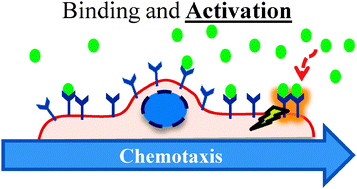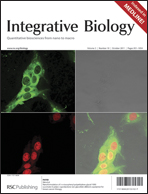Receptor differential activation and cooperativity better explain cellular preference for different chemoattractant gradient shapes in an EGFR system†
Abstract
This manuscript describes mathematical models that apply an aggregating receptor scheme to the epidermal growth factor receptor (EGFR) system to interpret and predict directed cell migration behaviors in differently-shaped chemoattractant gradients. This method incorporates the latest biochemical insights on


 Please wait while we load your content...
Please wait while we load your content...